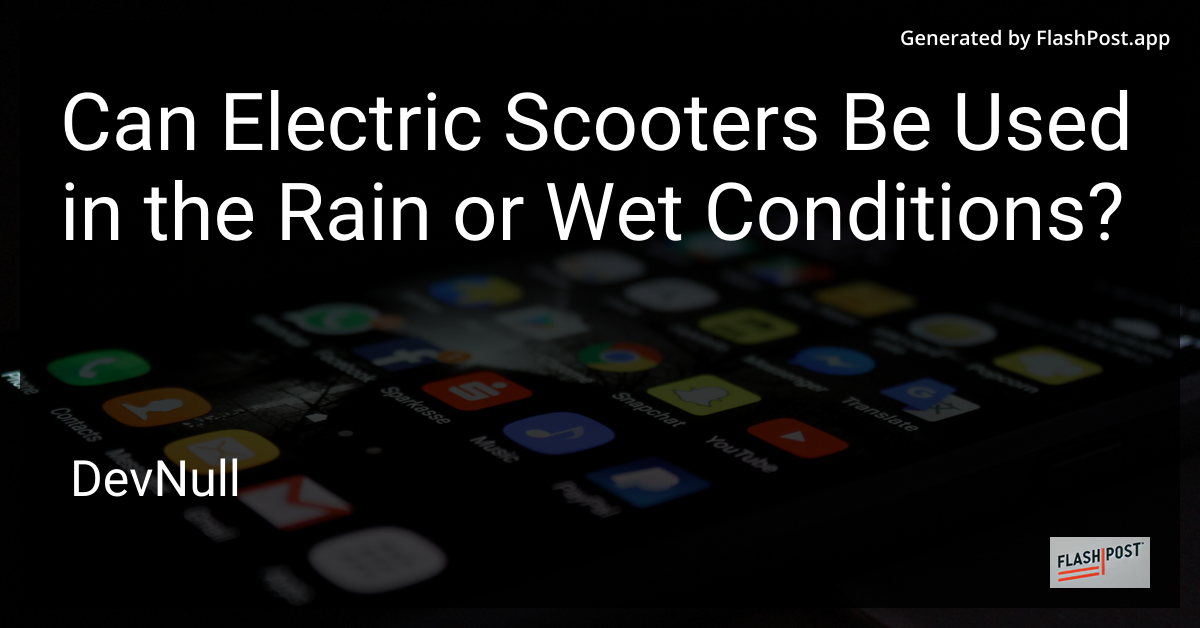

Can Electric Scooters Be Used in the Rain or Wet Conditions?
As electric scooters continue to gain popularity as a convenient and eco-friendly mode of transportation, many enthusiasts and potential buyers wonder about their performance in various weather conditions. One common inquiry is whether electric scooters can be used in the rain or wet conditions. In this article, we’ll explore this question in detail and provide some tips for riding safely in the rain.
Understanding Electric Scooter Weather Resistance
Electric scooters, much like other electronic devices, have varying degrees of water resistance, typically indicated by an IP (Ingress Protection) rating. This rating informs users about how well-protected the scooter’s components are against dust and water ingress. While some scooters are better equipped to handle wet conditions than others, it’s essential to understand the limitations of your specific model.
IP Ratings Explained
- IPX4: This rating means the scooter is protected from water splashes from any direction. Scooters with this rating can handle light rain but are not designed for heavy downpours.
- IPX5/IPX6: These ratings indicate a higher level of water resistance, capable of withstanding stronger water jets. They offer more protection against rain, making them more suitable for riding in wet conditions.
- IP67/IP68: Scooters with these ratings are highly water-resistant and can be used confidently in heavy rain. They are generally more expensive but offer superior protection.
Tips for Riding an Electric Scooter in the Rain
-
Check Your Scooter’s IP Rating: Always check the IP rating of your scooter before considering riding in wet conditions. Understanding the limits will prevent potential damage to the scooter.
-
Invest in Water-Resistant Gear: Protective gear such as raincoats, waterproof gloves, and helmet covers can enhance your comfort and safety during rainy rides.
-
Maintain a Safe Speed: Wet roads can be slippery. Reduce your speed to maintain control and prevent accidents.
-
Ensure Good Traction: Some scooters come with tires designed for better traction in wet conditions. If not, consider upgrading your tires for improved safety.
-
Avoid Puddles: Puddles might hide significant potholes or debris that can lead to accidents. Try to steer clear of them whenever possible.
-
Brake Gently: Wet conditions can affect braking performance. Apply the brakes gently and gradually to avoid skidding.
-
Regular Maintenance: Keep your scooter well-maintained, especially if you frequently ride in the rain. For maintenance tips, refer to this garden scooter maintenance guide that also applies to various aspects of e-scooter care.
Conclusion
While many electric scooters can handle rain to some extent, it is crucial to consider your scooter’s water resistance rating and practice safe riding habits. For those living in frequently wet climates, investing in a scooter with a higher water resistance rating is advisable. If you’re looking to purchase a new scooter, consider checking out these guides for the best e-scooter models and affordable electric scooters to find a model that suits your needs and budget.
By adhering to these guidelines, you can safely enjoy the flexibility and convenience of electric scooters, rain or shine. Stay dry and ride safe!
